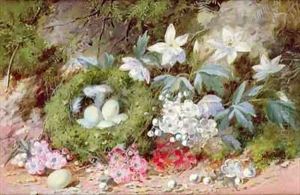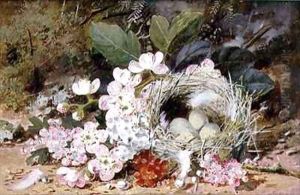William Cruikshank Paintings
William Cruikshank was a Canadian artist known for his landscape paintings and as an art educator. Born in London, United Kingdom, on October 29, 1848, Cruikshank eventually moved to Canada, where he would spend much of his life and where he would come to be recognized as a significant figure in the country's art scene.
Cruikshank's artistic journey began in the UK, where he studied at the South Kensington Art Schools, now known as the Royal College of Art. His early career was marked by his work as an illustrator and painter, and he exhibited his work at the Royal Academy in London. His artistic style was influenced by the European traditions of the time, primarily focusing on landscapes and genre paintings.
In 1871, he emigrated to Canada and settled in Toronto. In Canada, he quickly became involved in the local art community and began to exhibit with the Ontario Society of Artists. He also became a founding member of the Royal Canadian Academy of Arts. His landscapes often depicted the Canadian wilderness and rural settings, capturing the light and atmosphere of the Ontario landscape with a sense of realism and attention to detail.
In addition to his work as a painter, Cruikshank played an important role in art education in Canada. He was a long-time instructor at the Ontario School of Art, which later became the Ontario College of Art & Design (OCAD University). As an educator, he influenced a generation of Canadian artists, imparting techniques and values of the European art traditions while encouraging the exploration of a distinctly Canadian artistic identity.
William Cruikshank's contribution to Canadian art was not only through his own paintings but also through his role as a teacher and mentor to many students who would go on to shape the cultural landscape of the nation. He continued to paint and teach until his death on May 27, 1922, in Toronto. His works are part of various Canadian collections, including those of the Art Gallery of Ontario and the National Gallery of Canada, reflecting his lasting legacy in the history of Canadian art.


